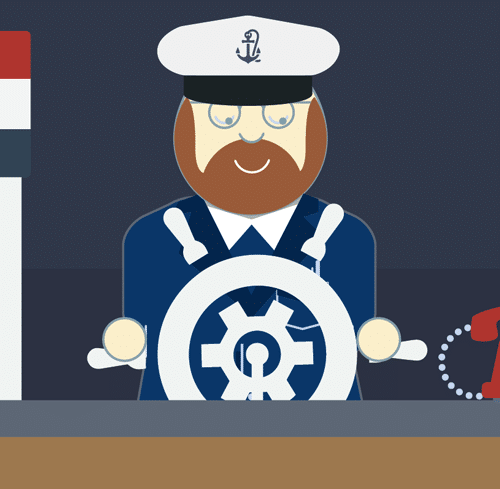V.U.C.A. HISTORY
This acronym emerged in the 1990s to describe the capability to engage situations marked by change and challenges. For leaders in the military and beyond, the doctrine underscores the importance of strategic decision-making, readiness planning, risk management, and situational problem-solving.
Read How V.U.C.A. Evolved at Sedulo“We are moving from a world of problems, which demand speed, analysis, and elimination of uncertainty to solve, to a world of dilemmas, which demand patience, sense-making, and an engagement of uncertainty.”
VOLATILITY
Characteristics: The challenge is unexpected or unstable and may be of unknown duration, but it is not necessarily hard to understand; knowledge about it is often available.
Approach: Build in buffer and/or contingency plans and devote resources to preparedness – for instance, stockpile inventory or overbuy talent. Those steps are typically expensive; your investment should match the risk.
Role of CI: The CI professional functions as the eyes and ears of the organization. While by definition, we cannot predict when or if a volatile situation will occur, we can employ an Early Warning System that tracks and monitors indicators of potential volatile situations.


VOLATILITY
Characteristics: The challenge is unexpected or unstable and may be of unknown duration, but it is not necessarily hard to understand; knowledge about it is often available.
Approach: Build in buffer and/or contingency plans and devote resources to preparedness – for instance, stockpile inventory or overbuy talent. Those steps are typically expensive; your investment should match the risk.
Role of CI: The CI professional functions as the eyes and ears of the organization. While by definition, we cannot predict when or if a volatile situation will occur, we can employ an Early Warning System that tracks and monitors indicators of potential volatile situations.

UNCERTAINTY
Characteristics: Despite a lack of other information, the event’s basic cause and effect are known. Change is possible but not a given.
Approach: Invest in information – collect, analyze and distribute it. This works best in conjunction with structural changes that can provide consistent ongoing monitoring of potential market events or competitor actions.
Role of CI: As the eyes and ears of the organization, we are responsible for ensuring that we have the most up-to-date, accurate intelligence available.
UNCERTAINTY
Characteristics: Despite a lack of other information, the event’s basic cause and effect are known. Change is possible but not a given.
Approach: Invest in information – collect, analyze and distribute it. This works best in conjunction with structural changes that can provide consistent ongoing monitoring of potential market events or competitor actions.
Role of CI: As the eyes and ears of the organization, we are responsible for ensuring that we have the most up-to-date, accurate intelligence available.

COMPLEXITY
Characteristics: The situation has many interconnected parts or variables. Some information is available or can be predicted, but the volume or nature of it can be overwhelming to process.
Approach: Leverage internal or external analytical expertise to help ‘simplify’ the complexity of the situation.
Role of CI: Information is not enough. The CI professional must connect the dots, converting information to intelligence that actually provide clarity and insight to decision makers. If the answer to uncertainty is information, then the answer to complexity is analysis.


COMPLEXITY
Characteristics: The situation has many interconnected parts or variables. Some information is available or can be predicted, but the volume or nature of it can be overwhelming to process.
Approach: Leverage internal or external analytical expertise to help ‘simplify’ the complexity of the situation.
Role of CI: Information is not enough. The CI professional must connect the dots, converting information to intelligence that actually provide clarity and insight to decision makers. If the answer to uncertainty is information, then the answer to complexity is analysis.

AMBIGUITY
Characteristics: No internal precedents exist; client faces “unknown unknowns.” Causal relationships are completely unclear.
Approach: Research. Understanding cause and effect requires generating hypotheses and testing them. Design research so the lessons learned are actionable and broadly applied.
Role of CI: Conduct research that will help test the decision makers’ hypothesis, encourage the inclusion of other industries or companies that have faced similar challenges. Benchmarking against both competitors and parallel industries can expose knowledge gaps and help to identify how others have successfully overcome similar challenges.
AMBIGUITY
Characteristics: No internal precedents exist; client faces “unknown unknowns.” Causal relationships are completely unclear.
Approach: Research. Understanding cause and effect requires generating hypotheses and testing them. Design research so the lessons learned are actionable and broadly applied.
Role of CI: Conduct research that will help test the decision makers’ hypothesis, encourage the inclusion of other industries or companies that have faced similar challenges. Benchmarking against both competitors and parallel industries can expose knowledge gaps and help to identify how others have successfully overcome similar challenges.

IN CLOSING
It is easy to fall into the trap of thinking of V.U.C.A. as a single thing, as uncertainty, or the certainty of change, but V.U.C.A. must be viewed and understood as the whole of its parts. We can’t understand, plan for, and mitigate the impact of V.U.C.A. if we do not understand each variable. Each component presents its own challenges; the tools discussed above provide the CI professional with a basic understanding of how to navigate the volatile, complex, uncertain and ambiguous waters of the competitive landscape.
Still Have Questions?
Call or email today to discuss how V.U.C.A. can help your business.
